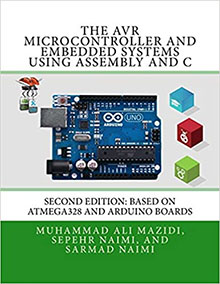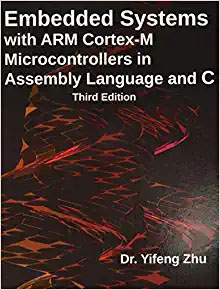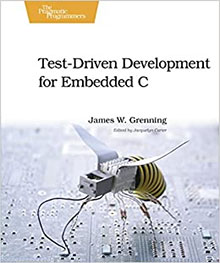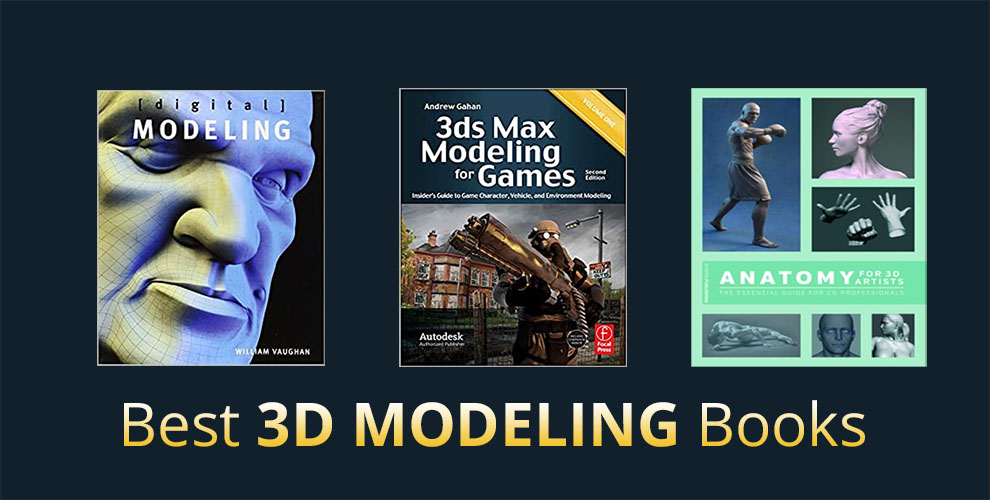The computers built into a larger system are known as embedded systems. They are microcontrollers or microprocessor-based systems that have software and hardware. Such computers help solve specific problems, look different from traditional computers, and are programmed to undertake a particular task.
Anyone hoping to know more about embedded systems cannot solely rely on the internet. You will need some solid content. So, in this guide, we will address some of the best embedded systems books. Let us list them one by one.
The presence of software and a processor is the primary similarity between an embedded and a regular system. Such systems can either work independently or are a part of the larger mechanical or electrical system.
Jump To
- 8 Best Embedded Programming Books For All
- Making Embedded Systems: Design Patterns for Great Software
- The AVR Microcontroller and Embedded Systems Using Assembly and C
- Embedded Systems with ARM Cortex-M Microcontrollers in Assembly Language and C
- Embedded Systems: Introduction to Arm® Cortex™-M Microcontrollers
- Test Driven Development for Embedded C (Pragmatic Programmers)
- Embedded Systems Fundamentals with ARM Cortex-M based Microcontrollers
- Mastering Embedded Linux Programming: Create fast and reliable embedded solutions with Linux 5.4 and the Yocto Project 3.1 (Dunfell)
- Embedded Systems Architecture
- Conclusion
Best Books for Embedded System Design – 8 Outstanding Picks
1. Making Embedded Systems: Design Patterns for Great Software 1st Edition
 |
Check Price |
| Author | Elecia White (Author) |
| Rating | 4.6 |
| Level | Beginner |
| eBook | Yes |
Are you interested in developing embedded systems? If yes, this is one of the best embedded programming books. It is an easy-to-read guide that helps you acquire a good development practice, depending on the classic software design patterns and the new patterns unique to embedded programming. The book is also extremely straightforward.
What will you learn?
It is one of the best embedded books to learn the following:
- Building system architecture for processors, not operating systems
- Understanding specific techniques for dealing with hardware difficulties
- Familiarity with manufacturing requirements
- Optimize your system to reduce cost and increase performance
- Creating an architecture that makes your software robust in resource-constrained environments
- Exploring sensors, motors, and other I/O devices
- Understanding how to implement complex mathematics on small processors
- Reducing RAM consumption, code space, processor cycles, and power consumption
- Updating embedded code directly in the processor
- Learning what interviewers look for when you apply for an embedded systems job
Who should read this book?
It is the best book for embedded system design for intermediate and experienced programmers, regardless of the platform used. You can pair up this book with some good embedded course online to have a wholesome experience.
What is not to like?
It could have a few more examples.
2. The AVR Microcontroller and Embedded Systems Using Assembly and C: Using Arduino Uno and Atmel Studio 1st Edition
 |
Check Price |
| Author | Sepehr Naimi (Author), Sarmad Naimi (Author), Muhammad Ali Mazidi (Author) |
| Rating | 4.6 |
| Level | All levels |
| eBook | Yes |
Atmel or Microchip’s AVR microcontroller is one of the most widely employed 8-bit microcontrollers. Arduino Uno is based on this microcontroller. It is one of the most available and inexpensive microcontrollers. This best book to learn embedded systems takes you through them both.
In this book, the author employs a step-by-step and systematic approach to help you understand the AVR chip’s programming.
What will you learn?
Next on our list of the best book for embedded system design is this informative guide. In this book, you will learn the following:
- How to program many of the AVR features, such as timers, serial communication, ADC, SPI, I2C, and PWM
- Examining the internal architecture of the AVR
- Employing both Assembly and C to show the AVR peripherals and I/O interfacing to real-world devices such as LCD, motor, and sensor
What did we not like?
The book needs good proofreading.
3. Embedded Systems with ARM Cortex-M Microcontrollers in Assembly Language and C: Third Edition
 |
Check Price |
| Author | Yifeng Zhu |
| Rating | 4.3 |
| Level | Basic |
| eBook | No |
Next, we have another excellent contender on our list for the best embedded systems books.
What will you learn?
It is one of Amazon’s best embedded programming books. Some things you will learn here are:
- Updated serial communication description (UART, SPI, and I2C),
- New serial communication examples
- Incorporation of GNU GCC compiler
- Low power modes
- Basic programming of ARM Cortex-M cores in assembly and C at the register level
- Modification of example programs from STM32L1 (Cortex-M3) to STM32L4 (Cortex-M4)
- Data representations
- Advanced topics such as interrupts, mixing C and assembly, direct memory access (DMA), system timers (SysTick), multi-tasking, SIMD instructions for digital signal processing (DSP), and instruction encoding/decoding
- Examples of interfacing peripherals
What did we not like?
It is one of the best embedded books, but you will see multiple spelling issues in this book.
4. Embedded Systems: Introduction to Arm® Cortex™-M Microcontrollers, Fifth Edition 5th Edition
 |
Check Price |
| Author | Jonathan W Valvano (Author) |
| Rating | 4.3 |
| Level | All levels |
| eBook | Yes |
Taking our list of the best books to learn embedded systems forward, we have another one of the top recommendations. It is a self-published book printed on demand, currently in its fifth version. It is the first book in the three-part series.
You discover the fundamentals of embedded systems applied to the ARM Cortex-M microcontrollers family. In the fifth edition, the book takes you through the LaunchPads based on the TM4C123, TM4C1294, and MSP432E4 microcontrollers.
It is one hands-on book, and every chapter has multiple lab assignments. It will give you ample practice.
What will you learn?
We feel it is the best embedded systems book for the vastness of the content that it has. Some things you will learn in this book are:
- Introduction to computers and interfacing focusing on assembly language and C programming
- Hardware/software interfacing and the design of embedded systems
- Operating systems, high-speed interfacing, control systems, and robotics
- Familiarity with microcontrollers, fixed-point numbers, the design of software in assembly language and C, elementary data structures, programming input/output including interrupts, analog to digital conversion, digital to analog conversion
- Solving new problems with new technology
Who will love this book?
It is one of the best embedded programming books for professionals who wish to deploy or design a real-time OS onto an ARM platform. College-level students with no prior background or knowledge will appreciate this book the most.
What did we not like?
Avoid the Kindle version of this book because the images are very tiny.
5. Test Driven Development for Embedded C (Pragmatic Programmers) 1st Edition
 |
Check Price |
| Author | James W. Grenning (Author) |
| Rating | 4.6 |
| Level | Introductory |
| eBook | Yes |
Any day without Test-Driven Development equals the time wasted watching your code deteriorate and chasing bugs. If you think TDD is not for you, you are highly mistaken. It is one of the best books for embedded system design to cater to the embedded C programmer in you. It is one modern programming practice that every C developer should know.
TDD can save you so much time that you can invest in adding valuable features to your product.
You will study with James, a recognized expert in applying TDD to embedded C. He has more than 1.5 decades of practicing and coaching experience in C, C++, Java, and C#. So, with this book, he will take you from a novice to a TDD master.
What will you learn?
This book will help you discover the following:
- Preventing defects and building software that have a long and useful life
- Hows and whys of TDD
- Locating mistakes before they become bugs
- Immediate notification of side effect defects
- Techniques for test-driving code right next to the hardware
- Design principles and how to apply them to C
- Keeping your code clean and flexible
Is this one of the best embedded books for you?
It is one of the best books for:
- C programmers
- Embedded C programmers
- C developers
What do you need?
To run the book’s examples, you will require:
- C/C++ development environment on your machine
- Microsoft Visual Studio for C++
- GNU GCC toolchain
What did we not like?
It is not the book for someone who doesn’t know the frameworks.
6. Embedded Systems Fundamentals with ARM Cortex-M based Microcontrollers: A Practical Approach FRDM-KL25Z Edition
 |
Check Price |
| Author | Alexander G Dean (Author) |
| Rating | 4.4 |
| Level | Intermediate |
| eBook | No |
It is the comprehensive best book to learn embedded systems.
What will you learn?
Some things you learn in this class are:
- Concepts of MCU-based embedded systems and how they differ from general-purpose computers
- Creating microcontroller-based embedded systems featuring an ARM Cortex-M CPU core
- Knowledge of the ARM Cortex-M0+ CPU, the Kinetis KL25Z MCU, and the low-cost FRDM-KL25Z MCU development board
- General purpose I/O peripheral to provide an early, hands-on experience with reading switches and lighting LEDs using C code
- Functions, arguments, return values, activation records, exception handlers, control flow constructs for loops and selection, memory allocation and use, and accessing data in memory.
- Multitasking on the CPU
- CMSIS hardware abstraction layer that streamlines software access to peripherals
- Improving responsiveness and software modularity while reducing CPU overhead
- Quantization and sampling as a foundation for digital to analog conversion and analog to digital conversion
- The interplay of interrupts, peripherals, and schedulers
- ARM Cortex-M0+ processor core, including organization, registers, memory, and instruction set
- Interrupts and exceptions, including CPU response and hardware configuration
- Designing software for a system with interrupts
- Interrupt configuration, writing handlers in C, and sharing data securely given preemption
- Overview of tool-chain, which translates a program from C source code to executable object code
- Source code and the object code the tool-chain generated.
- SPI, asynchronous serial (UART), and I2C. UART communication
- Three protocols and their supporting peripherals
- Analog interfacing
- DAC, ADC, and analog comparator peripherals
- SysTick, PIT, TPM, and COP timers
- Timer peripherals and their use for generating a periodic interrupt
- Watchdog timers to detect and reset an out-of-control program.
- Serial communications comprise fundamentals of data serialization, framing, error detection, media access control, and addressing.
- How to buffer data between communication ISRs and other parts of the program
- FRDM-KL25Z’s debug MCU as a serial port bridge over USB to the PC.
- And more
.
Who should buy this book?
It is one of the best embedded books for use in ECE, CS, and EE departments.
What did we not like?
It could have more examples.
7. Mastering Embedded Linux Programming: Create fast and reliable embedded solutions with Linux 5.4 and the Yocto Project 3.1 (Dunfell), 3rd Edition 3rd ed. Edition
 |
Check Price |
| Author | Frank Vasquez (Author), Chris Simmonds (Author) |
| Rating | 4.7 |
| Level | Intermediate to Advanced level |
| eBook | Yes |
Do you need a book that can help demystify embedded Linux? If yes, this is the book for you. In this book, you will learn to harness the power of Linux for creating robust and versatile embedded systems.
What will you learn?
Some things you will discover in this book are:
- Developing and configuring robust embedded Linux devices
- Understanding the Linux 5.4 and the Yocto Project 3.1 (Dun fell)
- Different ways to debug and profile your code in both user space and the Linux kernel
- Fundamental elements that underpin all embedded Linux projects: the toolchain, the bootloader, the kernel, and the root filesystem, and creating them from scratch
- How to debug your code, whether it resides in apps or in the Linux kernel itself
- Automating the process using Buildroot and the Yocto Project
- How to implement an effective storage strategy for flash memory
- Install updates to a device remotely once it’s deployed
- Troubleshoot BitBake build failures and streamline your Yocto development workflow
- Dividing your system up into services supervised by BusyBox, run it
- Writing code for embedded Linux
- How to access hardware from apps, the implications of writing multi-threaded code, and techniques to manage memory in an efficient way
- Tracers and profilers available for Linux
- Creating efficient and secure embedded devices using Linux
- Updating IoT devices securely in the field using Mender or balena
- Prototyping peripheral additions by reading schematics, modifying device trees, soldering breakout boards, and probing pins with a logic analyzer
Who should buy this book?
This is one of the best embedded systems books for:
- System administrators
- Systems software engineers
- Anyone who wishes to learn how to implement Linux on embedded devices
- Embedded systems engineers accustomed to programming for low-power microcontrollers
- Anyone who develops hardware that needs to run Linux
What do you need?
Before you read this book, you should have a solid grasp of POSIX standards, C programming, and shell scripting.
What did we not like?
It is one of the best OS reference guides, but it lacks emphasis on embedded programming.
8. Embedded Systems Architecture: Explore architectural concepts, pragmatic design patterns, and best practices to produce robust systems
 |
Check Price |
| Author | Daniele Lacamera (Author) |
| Rating | 4.4 |
| Level | All levels |
| eBook | Yes |
What will you learn?
It is one of the best books to learn embedded systems `
- Setting up a development environment
- Core system architectural concepts
- Identifying and overcoming challenges in embedded environments
- Participating in the design and definition phase of an embedded product
- Creating an embedded development lab
- Parallel multithreaded applications through the development of a scheduler
- Knowledge of the steps needed to boost the IoT systems’ security
- Creating safety-critical and memory-safe parallel
- Building distributed embedded systems
- Exploring pragmatic designs, booting-up mechanisms, and memory management
- Programming interface and device drivers to establish communication via TCP/IP
- Memory management, focusing on a memory-safe approach, multithreading, and the RTOS approach
- Knowledge of architectural design patterns and engineering tradeoffs
- Writing memory-safe code
- Learning the architecture behind the most communication interfaces
- Getting well-versed with the multitask parallel execution patterns
- Familiarity with the design and development patterns for connected and distributed devices in the IoT
Who should read this book?
It is one of the best picks for software designers and developers who wish to know about embedded programming.
If you are new to this subject, you will also benefit from this roadmap to learn embedded systems online. Go, give it a read!
Conclusion
So, these are the top eight best embedded systems books. As part of this guide, we have tried to detail each of these books, and we believe they are one better than the other. So, whatever you pick, it can guarantee a wholesome learning experience.
However, the best choice will be Embedded Systems: Introduction to Arm® Cortex™-M Microcontrollers, Fifth Edition 5th Edition. It is an excellent read with everything on point, but, as stated, avoid the Kindle version because it may disappoint you a little.





